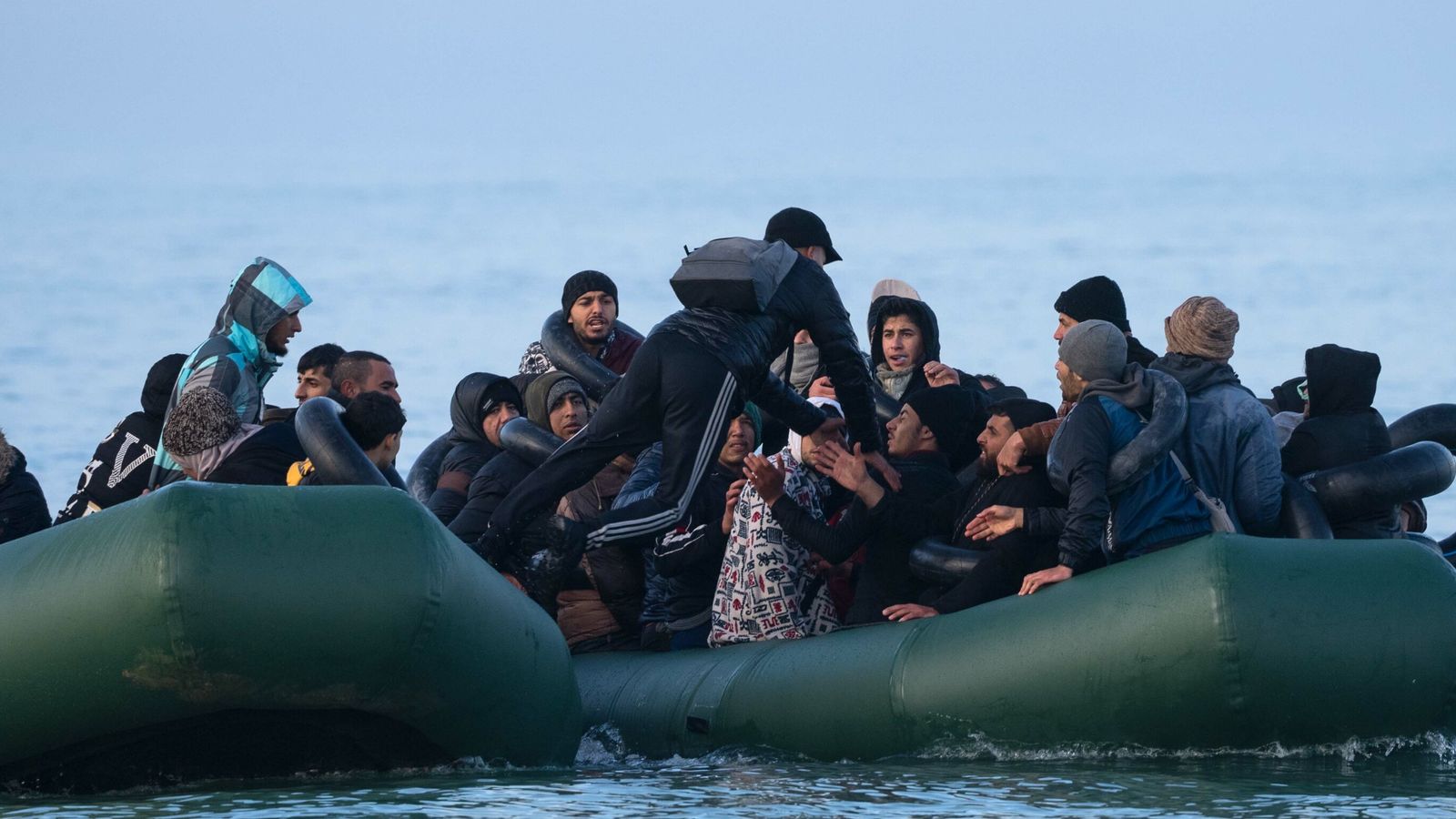As it was revealed a total of 40,885 migrants have reached UK shores in 2022, Sky’s Europe news editor Sophie Garratt and her team headed to Calais, where they discovered people traffickers are adapting to new methods to evade getting caught.
Below is her harrowing account of migrants using a dangerous taxi boat service to make the notoriously treacherous Channel crossing.
We head out into the Channel. It’s dark and cold and there’s a heavy fog that doesn’t give us many warnings of surrounding sandbanks and ferries.
Our skipper has an entire lifetime of experience in these waters. It’s pretty dangerous, even for us.
We’ve been here before. As winter sets in, the weather conditions become more brutal and each year we ask ourselves “Surely this will be their last push?” But it never is.
At first, we see the French border patrol boat on the horizon. And then the familiar silhouette of a slow-moving, rubber dinghy.
It’s packed. On board, around 50 migrants. Mostly men, but some women and a few smaller faces huddled down. The water is lapping over the sides, some of the passengers hanging their feet over into the cold sea.
More than 40,000 migrants have crossed Channel to UK this year, government figures show
Immigration minister vows ‘Hotel Britain’ will end for migrants to deter ‘asylum shopping’
Thousands to be vaccinated at Manston migrant centre after spike in highly contagious disease
They shout and wave at us – delighted and relieved that they are on their way. We hear Arabic being spoken, but there’s not much time for discussion. Their focus is to stay afloat and head towards the UK coastline.
Maritime law dictates that only vessels or passengers in distress receive assistance from the coastguard on patrol. And it seems that this boat has refused help. All the French authorities can do is trail behind until the dinghy arrives in British waters.
It’s a moral dilemma, says our skipper Olivier. “I have friends in the police here, and they struggle with this. It’s the law, but they also want to be able to do more to stop these crossings from happening.”
But there’s something else more interesting in the bay. Another large inflatable boat, but with only four men on board. They circle and drift in the waters. At first, we’re uncertain about what they are doing, or even if they know how to operate their dinghy.
Then we see a new technique that is being used here. A taxi boat service.
As policing tactics adapt to keep up with the determination of people traffickers, so too have the methods used to evade being caught.
We’ve become used to seeing large inflatable dinghies dragged down these beaches, with dozens of people following behind.
Now, this boat comes to collect at the shoreline. A quick hit that draws much less attention and can move quickly along the coastline.
These men are waiting for their passengers to arrive. Within a few moments, they change direction and speed towards the next bay – a wide beach outside Calais.
We follow, and on the shore, we make out dozens of people running into the water. It’s chaos and there’s a scramble to get to the boat as quickly as they can to guarantee their space on board.
Behind them, a line of French police. They give chase to a few migrants, but once they reach the water, this becomes their borderline.
Another dinghy is also there. Migrants jump and splash as they race into the icy water, screaming to those in control of the dinghies to wait for them. It’s mayhem, but the boats start to make their way.
Read more: More than 40,000 migrants have crossed Channel to UK this year
We see three men fall overboard. It’s unclear whether this is a deliberate push from those on board the vessel to lighten their load. The motor is struggling, and they’ve lost their water pump.
The dinghy goes without them. No time to stop now. None of the men have life jackets. They’re not moving, barely swimming. We see their faces and they see us.
We hear them cry out for help. Olivier knows how quickly these waters can become dangerous. He has saved lives here in the past.
We head towards the men and they’re already in a serious condition. We pull up alongside them and use whatever we can to drag them on to our boat. They’re in shock and showing signs of severe hypothermia.
We get them back into the port where paramedics are waiting. They’ll be fine.
One of the medics asked us how many boats we saw go out this morning. “I’ll be treating many of them before the end of the day.”
The night before, around 500 migrants had been rescued from the Channel by French authorities.
Crossings here no longer work around the seasons, the demand only increases the supply in new and more dangerous ways.






















